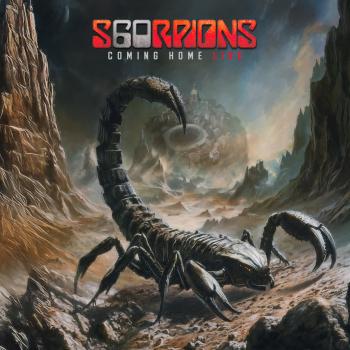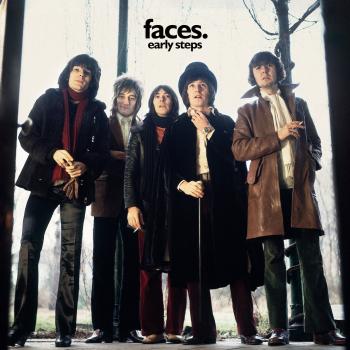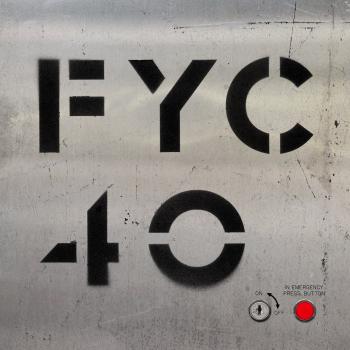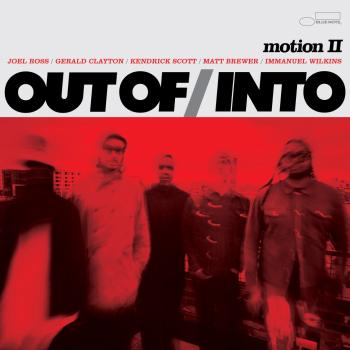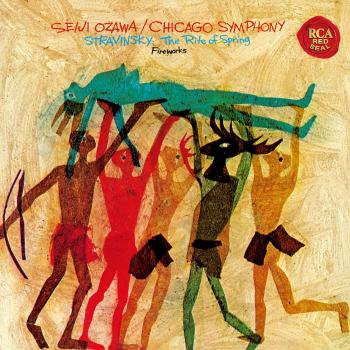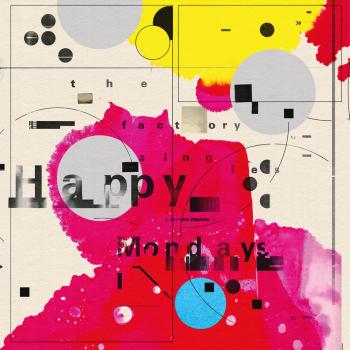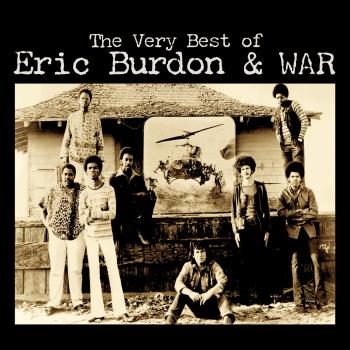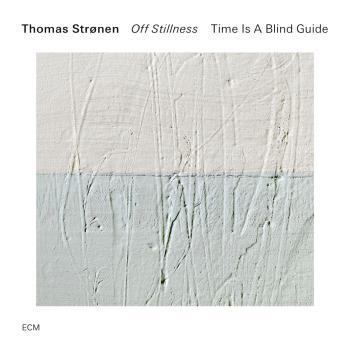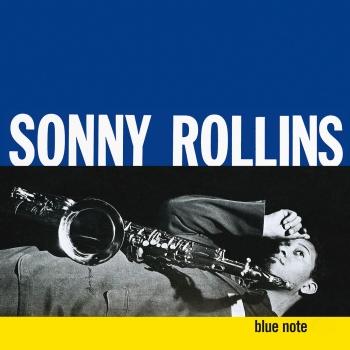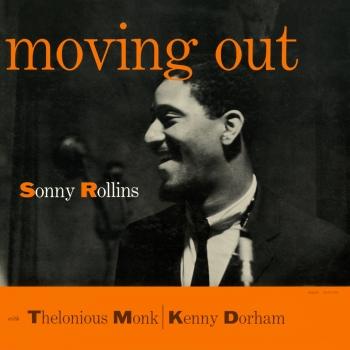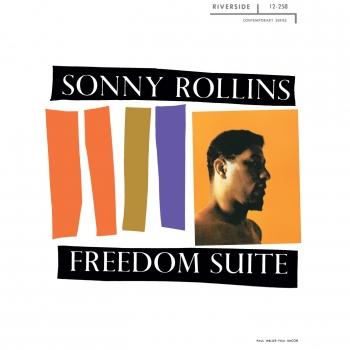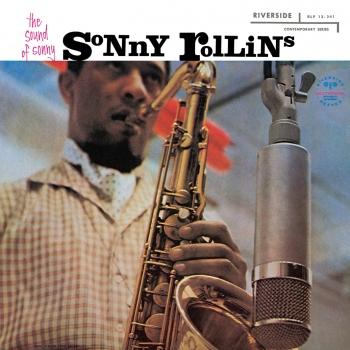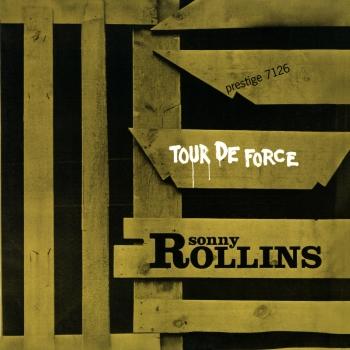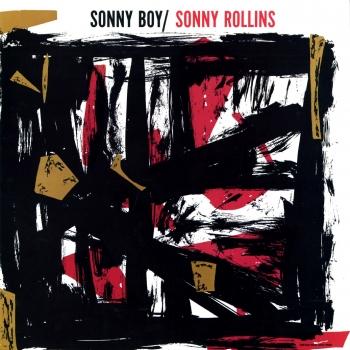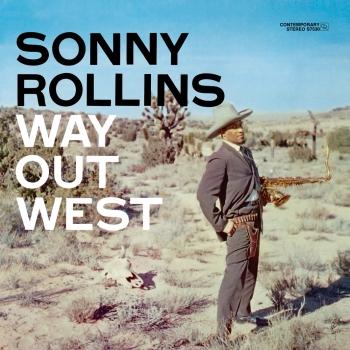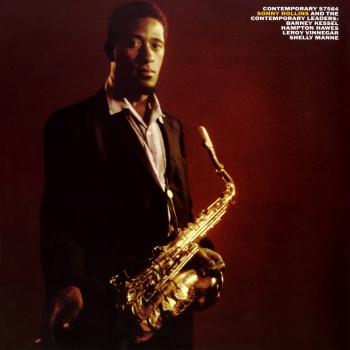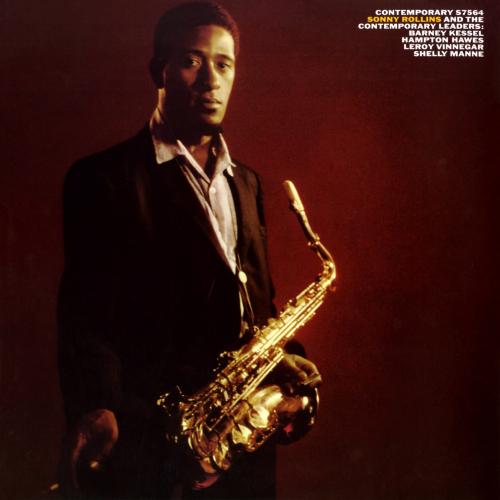
Sonny Rollins And The Contemporary Leaders (Remastered) Sonny Rollins
Album Info
Album Veröffentlichung:
1958
HRA-Veröffentlichung:
27.01.2017
Das Album enthält Albumcover Booklet (PDF)
Entschuldigen Sie bitte!
Sehr geehrter HIGHRESAUDIO Besucher,
leider kann das Album zurzeit aufgrund von Länder- und Lizenzbeschränkungen nicht gekauft werden oder uns liegt der offizielle Veröffentlichungstermin für Ihr Land noch nicht vor. Wir aktualisieren unsere Veröffentlichungstermine ein- bis zweimal die Woche. Bitte schauen Sie ab und zu mal wieder rein.
Wir empfehlen Ihnen das Album auf Ihre Merkliste zu setzen.
Wir bedanken uns für Ihr Verständnis und Ihre Geduld.
Ihr, HIGHRESAUDIO
- 1 I've Told Ev'ry Little Star 05:27
- 2 Rock-A-Bye Your Baby With A Dixie Melody 04:56
- 3 How High The Moon 07:47
- 4 You 04:15
- 5 I Found A New Baby 03:41
- 6 Alone Together 06:01
- 7 In The Chapel In The Moonlight 06:42
- 8 The Song Is You 05:42
Info zu Sonny Rollins And The Contemporary Leaders (Remastered)
While the personnel on this release were leaders in their own right and contemporaries of Rollins in 1958, the title refers to the fact that the musicians were all recording with their own respective groups for the west coast Contemporary label at the time this album was made. The material is essentially standards, favorites of either the swing or the bop era. "How High The Moon" gets a trio treatment, with Rollins taking his time over the taut accompaniment provided by Kessel and Vinnegar; their bass and guitar given room to stretch out as well.
Hampton Hawes' opening on "Alone Together" is lithe, muscular and spare. Rollins doesn't even enter to solo until after choruses by Hawes and Kessell, giving things a friendly, jam-session atmosphere. Manne lays out on "In The Chapel In The Moonlight," on which the tenorist waxes lyrical to the sure-footed, understated accompaniment of piano, bass and guitar. The presence of these layered, intriguing arrangements makes this record more than a simple all-star blowing date.
„Sonny Rollins's career "out West" in California was, at the time this session was recorded, confined mainly to playing live. He'd done one outstanding record with a California-based band (Out West) but found time to cut some tunes with Hampton Hawes, Leroy Vinnegar, Barney Kessel, and Shelly Manne. As Contemporary Records-founder Lester Koenig remarks in the liner notes, Rollins characteristically unpacked a massive sheaf of music from which to pull tunes for the session. Like Out West, the tunes are at least idiosyncratic. When's the last time a postbop pioneer played anything like "Rock-a-Bye Baby with a Dixie Melody"? And the guitar-bass-sax trio on "I've Found a New Baby" slides off pristinely with its walking bass line, sharp strums, and Rollins's array of tongue effects and wafting tone that comes off its floating plateau to pounce on the melody repeatedly. Rollins sounds enthralled to be in this company, playing big-bodied lines and fluid loops. This is exceptional Rollins, plain and simple.“ (Andrew Bartlett)
Sonny Rollins, tenor saxophone
Hampton Hawes, piano
Barney Kessel, guitar
Leroy Vinnegar, bass
Shelly Manne, drums
Victor Feldman, vibes (on track 4)
Recorded October 20, 21 & 22,1958 at Contemporary's Studio in Los Angeles
Produced by Lester Koenig
Digitally remastered
Sonny Rollins
will go down in history as not only the single most enduring tenor saxophonist of the bebop and hard bop era, but also the greatest contemporary jazz saxophonist of them all. His fluid and harmonically innovative ideas, effortless manner, and easily identifiable and accessible sound have influenced generations of performers, but have also fueled the notion that mainstream jazz music can be widely enjoyed, recognized, and proliferated. Born Theodore Walter Rollins in New York City on September 7, 1930, he had an older brother who played violin. At age nine he took up piano lessons but discontinued them, took up the alto saxophone in high school, and switched to tenor after high school, doing local engagements. In 1948 he recorded with vocalist Babs Gonzales, then Bud Powell and Fats Navarro, and his first composition, "Audubon," was recorded by J.J. Johnson. Soon thereafter, Rollins made the rounds quickly with groups led by Art Blakey, Tadd Dameron, Chicago drummer Ike Day, and Miles Davis in 1951, followed by his own recordings with Kenny Drew, Kenny Dorham, and Thelonious Monk.
In 1956 Rollins made his biggest move, joining the famous ensemble of Max Roach and Clifford Brown, then formed his own legendary pianoless trio with bassist Wilbur Ware or Donald Bailey and drummer Elvin Jones or Pete La Roca in 1957, doing recorded sessions at the Village Vanguard. Awards came from Down Beat and Playboy magazines, and recordings were done mainly for the Prestige and Riverside labels, but also for Verve, Blue Note, Columbia, and Contemporary Records, all coinciding with the steadily rising star of Rollins. Pivotal albums such as Tenor Madness (with John Coltrane), Saxophone Colossus (with longstanding partner Tommy Flanagan), and Way Out West (with Ray Brown and Shelly Manne), and collaborations with the Modern Jazz Quartet, Clark Terry, and Sonny Clark firmly established Rollins as a bona fide superstar. He also acquired the nickname "Newk" for his facial resemblance to Brooklyn/Los Angeles Dodgers pitcher Don Newcombe.
But between 1959 and 1961 he sought a less superficial, more spiritual path to the rat race society of the times, visiting Japan and India, studying yoga and Zen. He left the music business until 1962, when he returned with the groundbreaking and in many ways revolutionary recording The Bridge with guitarist Jim Hall for the RCA Victor/Bluebird label. Rollins struck up a working relationship with trumpeter Don Cherry; did a handful of innovative LPs for the RCA Victor, MGM/Metro Jazz, and Impulse! labels; did one record with his hero Coleman Hawkins; and left the scene again in 1968. By 1971 he came back with a renewed sense of vigor and pride, and put out a string of successful records for the Milestone label that bridged the gap between the contemporary and fusion jazz of the time, the most memorable being his live date from the 1974 Montreux Jazz Festival, The Cutting Edge. Merging jazz with calypso, light funk, and post-bop, the career of Rollins not only was revived, but thrived from then onward. He was a member of the touring Milestone Jazz Stars in 1978 with McCoy Tyner and Ron Carter, and gained momentum as a touring headliner and festival showstopper.
His finest Milestone recordings of the second half of his career include Easy Living, Don't Stop the Carnival, G-Man, Old Flames, Plus Three, Global Warming, This Is What I Do, and Without a Song: The 9/11 Concert. He has worked extensively with road and recording bands that have included such artists as electric bass guitarist Bob Cranshaw; trombonist Clifton Anderson; pianists Tommy Flanagan and Stephen Scott; keyboardist Mark Soskin; guitarists Bobby Broom and Jerome Harris; percussionist Kimati Dinizulu; and drummers Jack DeJohnette, Perry Wilson, Steve Jordan, and Al Foster. Rollins formed his own record label, Doxy, through which he issued the CD Sonny, Please in 2006. Well into his eighth decade of life, Rollins continued to perform worldwide. As a composer, he will always be known for three memorable melodies that have become standards and well-recognized tunes in the jazz canon -- "Oleo," "Airegin," and especially "St. Thomas." (Michael G. Nastos). Source: Blue Note Records.
Booklet für Sonny Rollins And The Contemporary Leaders (Remastered)

